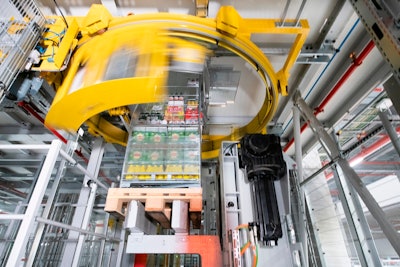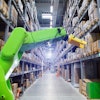
In today's world, the traditional image of someone stocking shelves from a neat little box and engaging with customers seems outdated. While the task of stocking shelves remains, the methods of the past are no longer effective. With SKU proliferation, space constraints and labor shortages, running a grocery store has become a challenging endeavor. While there is no magical solution to instantly stock shelves, automation can make a significant difference.
Mixed case fulfillment
Mixed case fulfillment is a solution designed to help companies operate more efficiently and competitively by creating mixed case pallets that are aisle-ready and compact for transportation. For instance, instead of receiving a pallet of only one variety of soda, such as lemon lime, with mixed case fulfillment, the pallet can accommodate multiple varieties like orange, cola, root beer, grape, and lemon lime. This flexibility addresses the reality of SKU proliferation in today's market.
How it works
Mixed case fulfillment combines multiple automation systems to create a comprehensive solution. It starts with products stored in a high-density case/tote buffer system. The cases or totes are then retrieved and automatically transported to the palletizing station, either manual or automatic, based on their predefined sequence on the shipping pallet. The cases are arranged on pallets by either automatic palletizers or operators at ergonomic palletizing stations. Once the pallets are complete, they are wrapped to ensure stability and then sent for delivery to the store. These systems can operate in three different environmental zones—ambient, chilled, and frozen—to accommodate various product requirements.
While the focus often lies on the mechatronics involved in this system, it wouldn't be possible without the software behind the scenes. Software enables the system to ensure consistent operations optimized for the specific needs of the store. With the right software in place, changes to pallet building can be implemented quickly, ensuring the right products are available on the shelves when needed.
Putting technology into action
Mixed case fulfillment is not just a theoretical concept; it is already being implemented in the market. A leading wholesale grocery distributor is in the process of implementing a system that can palletize 165,000 cases per day, with the capacity to reach 200,000 cases per day for future growth. The pallets themselves will be densely packed and shelf-ready, allowing for quick stocking at stores and creating a safer and more efficient work environment.
This mixed case fulfillment system will feature a high-bay unit load automated storage/retrieval system (AS/RS) for pallets, a multishuttle for case buffering and sequencing, and palletizers to automatically build mixed-case pallets. Additionally, a goods-to-person piece picking module will be integrated to handle smaller order quantities. The entire system is controlled and operated through software to ensure consistency and visibility.
Sustainability
Sustainability is a crucial consideration for businesses across sectors, including the grocery industry. While there is still work to be done in this regard, solutions like mixed case fulfillment can contribute to reducing carbon emissions by maximizing space in available trailers. By doing so, the number of trucks needed on the road at any given time can be reduced, resulting in up to an 18% decrease in transportation costs.
The next step
Is mixed case fulfillment the right choice for every grocer? It's challenging to make a sweeping statement, as each retailer has unique needs. However, it is an automated solution that can drive operational improvements throughout a facility, addressing the most pressing challenges. It is crucial to find a solution provider that can offer both hardware and software, along with lifecycle support for the system, to ensure a well-run operation. Despite the uncertainty of the future, there is no denying that automation has the potential to enhance our lives and simplify tasks. Therefore, why not embrace it and reap the benefits?





















